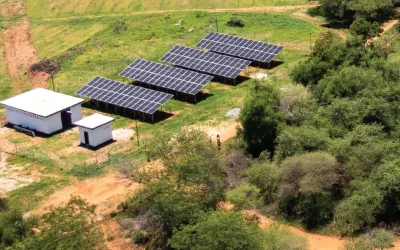Mines catch cold, as global metal prices tumble
FALLING global metal prices are taking a heavy toll on the viability of local mining companies amid fears this could force some of the entities to scale down operations in order to contain rising costs and maintain profitability.
The mining companies have since made an impassioned plea for the Government to intervene to limit the impact of the falling global mineral prices.
They have proposed interventions such as a reduction of some of the taxes and cost of key enablers like electricity.
Mining is a strategically key economic sector for Zimbabwe.
Apart from employing thousands, mining in Zimbabwe accounts for over 12 percent of gross domestic product and generates well over three-quarters of the country’s export earnings.
Zimbabwe has more than 60 extractable minerals but limited investment means less than 10 are currently being commercially exploited. Among these are gold, platinum, diamond, chrome, nickel, coal and lithium.
Over the past 12 months the mining industry across the globe has experienced softening prices for key minerals with the most affected being rhodium -74 percent, lithium -69 percent, diamond -60 and nickel -8 percent.
The World Bank’s metals and minerals price index rose 10 percent in the first quarter of 2023. Price increases at the beginning of the year reflected positive sentiment about stronger demand amid supply disruptions for some key metals.
Metal prices were forecast to fall this year as supply recovers amid weak demand in advanced economies and China. Zimbabwe’s mining companies said operating costs had increased by 10 percent in the past 11 months.
Chamber of Mines of Zimbabwe (CoMZ) chief executive Isaac Kwesu said in an interview the mining companies had been hit hard by the plunging global commodity prices.
Kwesu said there was very little mines could do about the situation given that they are only price takers of global metal prices.
The CoMZ boss said while metal prices were coming down on the international market, costs were heading north, negatively impacting the viability of miners. This, however, jeopardises Zimbabwe’s ambitious target to grow mining to a US$12 billion industry by the end of this year.
Zimbabwe’s foreign currency receipts reached US$5,5 billion in the first half of 2023 driven by exports and diaspora remittances among other top earners, according to the Reserve Bank of Zimbabwe (RBZ)’s mid-year Monetary Policy Statement (MPS) review.
The Government has designated mining as one of the key anchors expected to drive short to medium-term economic growth.
The growth of mining is regarded as a critical stepping stone towards the attainment of the country’s vision of an upper-middle-income country by 2030.
“Unfortunately small countries like us are price takers, our mining entities are price takers, and we sell our minerals to a global world and the prices are beyond our control and we take whichever price obtaining.”
“The recent development where prices are coming down is beyond our control, what we can only control is the cost side. Unfortunately, the cost structure has been going up,…so we are caught in between where both ends are burning,” he said.
Kwesu said the impact of falling global mineral prices came as critical costs had gone up significantly.
For instance, the royalty for lithium saw an increase of more than 160 percent, and platinum increased by more than 180 percent in the last 11 months.
Kwesu said the viability challenges were inevitable given this came at a time when revenues are coming down while costs are increasing. “So, I almost certainly see a significant number of companies facing viability challenges; some even scaling down their operations.”
At the individual enterprise level, the mining companies have started exploring initiatives to cut costs, which could also result in loss of employment for some mine workers. Kwesu said when situations like this arise, mining companies try by all means to reengineer their processes, reduce operating costs, look at areas of duplication, and adopt lean structures.
“Unfortunately, they can reduce the gap up to a certain level; some of the costs are structured in a way that they require intervention from the Government; costs such as tax or royalties, costs such as electricity have gone up.
“Over the last 11 months, power went up by more than 6 percent, we understand they (regulators) even want to increase it at a time we are even mooting to reduce operations. So, we can only look forward to other stakeholder sensitivity to the plight of mines for the common benefit of everyone,” Kesu said.
He said cutting some of the key costs would provide a softening side to the situation miners find themselves in, which could improve the viability of mining operations in the country.
-ebusinessweekly








